TS
boleroes11
"Chengdu J-10" China, Chinese multirole fighter.
Chinese multirole fighter Chengdu J-10
Chengdu J-10 - Chinese multi-purpose all-weather fighter. This fighter was designed and manufactured by the Chengdu Aircraft Industry Group (CAIG). Export version of the fighter has the designation F-10. In the west, the machine is also known as the Vigorous Dragon - «Swift dragon."
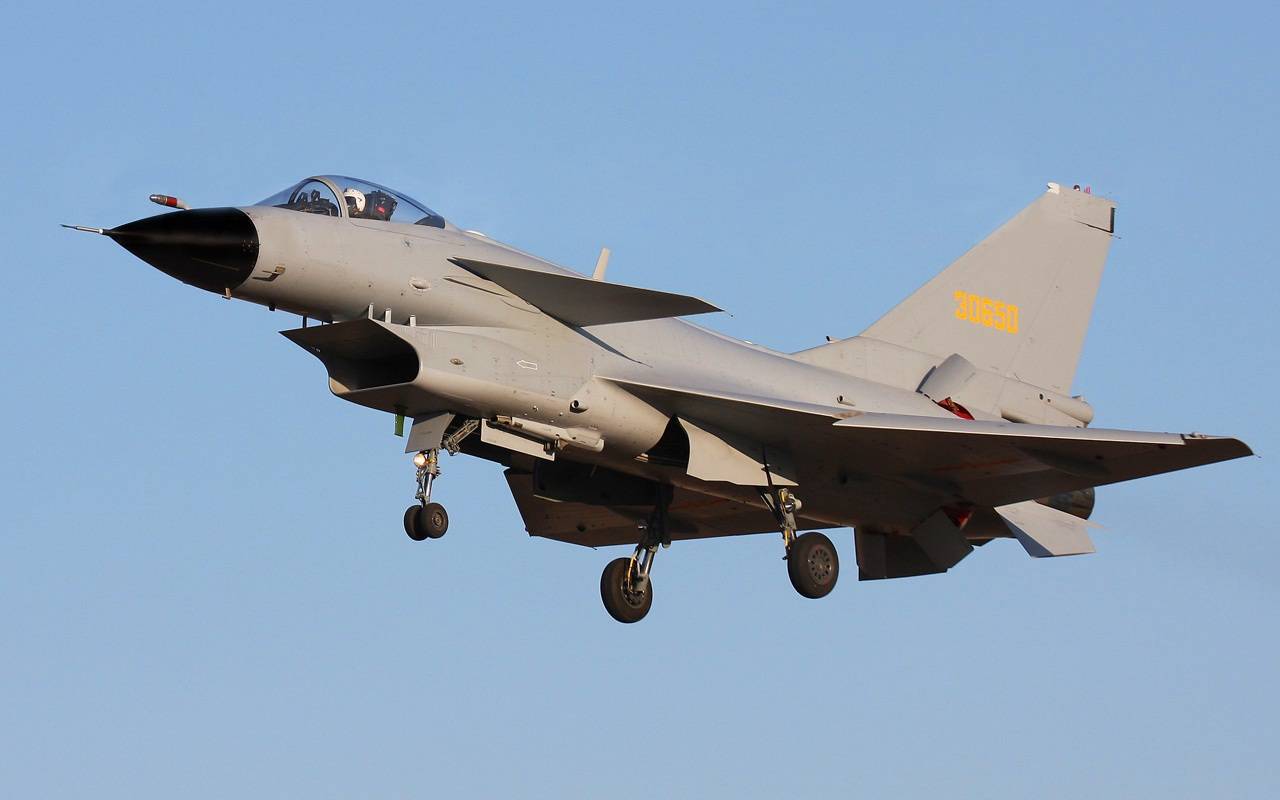
In China in the early 1990s. began to develop a new generation of fighter aircraft, which, on its combat potential had to walk to such aircraft as EF2000, «Rafale" or MiG-29M. Naturally, in the PRC to solve such a complex problem could not without cooperation with foreign companies owning the most advanced technology aircraft. In developing this machine originated probably the most unusual international symbiosis that combined Chinese, Israeli and Russian experts.
The basis for Chinese fighter aircraft designers took Israeli IAI «Lavi." In Israel, working on his plane stopped in 1987 under U.S. pressure.
In an open first print information about the new fighter appeared in October 1994. Then press with reference to the U.S. space reconnaissance, it was reported that Chengdu build aircraft that its size and outline resembles a fighter Dassault "Rafale" or "Eurofighter» EF2000.
Later it became clear that in shaping J-10 fighter involved specialists Israeli company IAI, who handed fighter technology to China "Lavi". The program involved a Chinese fighter jet and the Russian aviation industry. In particular, it was decided to equip the Russian aircraft turbofan engine AL-31F, which is installed on the Chinese Su-27. And reported on the negotiations, the acquisition of licenses for production of this engine in Chinese enterprises, but Russia does not show interest in the transfer to China of the latest technologies in the field of aircraft engine.
Aircraft development program declassified December 29, 2006 in the creation of J-10 took part in the Russian advisers from OKB MiG TsAGI. On the new Chinese fighter engines used scientific production association "Saturn" Russian and Chinese production (under license). In addition, the design of the aircraft were used by Israel sold to China for the development of the fighter IAI Lavi. In size J-10 occupies an intermediate position between the F-16 and Typhoon or Rafale, but it is much more Israeli Lavi. As of August 2012 it produced about 270 machines.
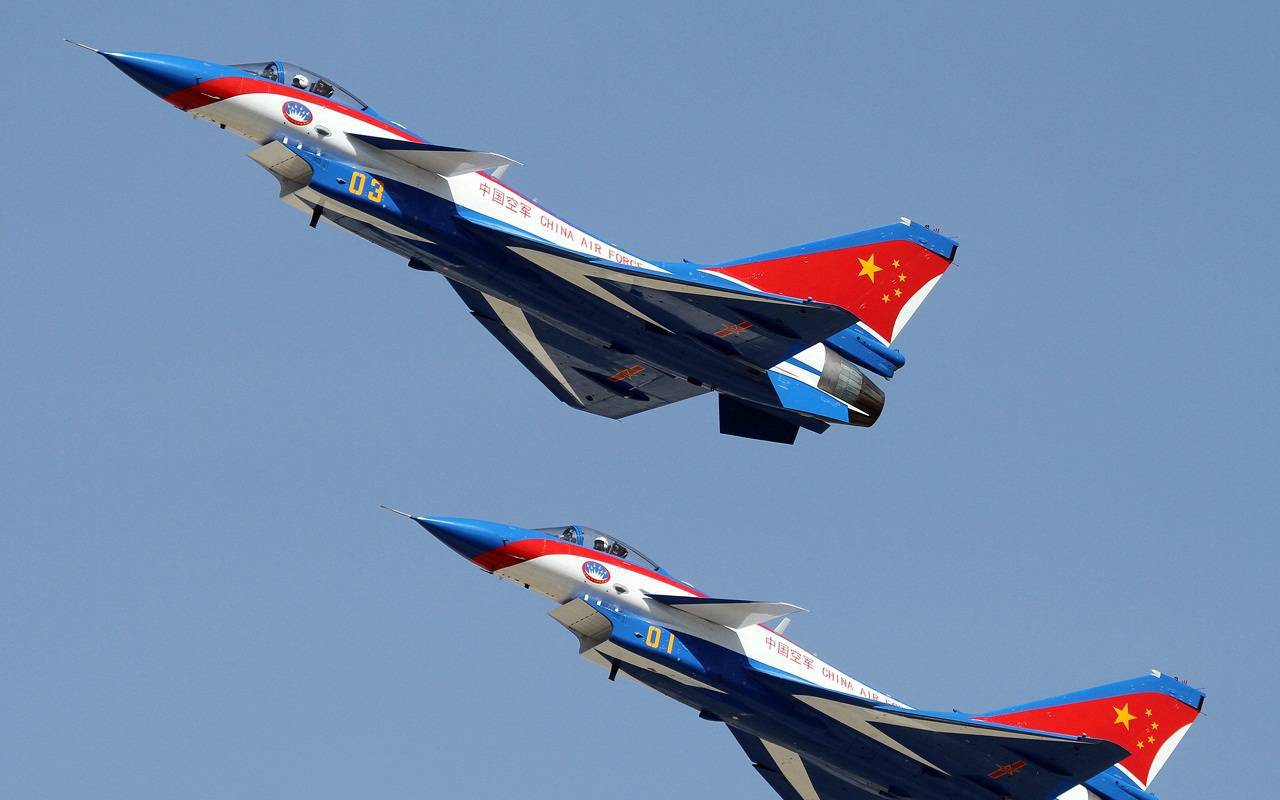
Fighter executed by the wind a "duck." Its aerodynamic design is optimized to fly at supersonic speeds and performing energetic maneuvers with access to large angles of attack.
Production aircraft J-10A first flew on June 28, 2002
J-10 fighter has aerodynamic design "duck" and mid-delta wing, swept, closely spaced to the wing canards odnokilevym and vertical tail surfaces. Basically airframe is made of aluminum alloy and carbon fiber. Assumes the use of limited measures to reduce the radar signature of the aircraft.
Integral part of the triangular low wing at the root is thicker profile, which decreases down the scale. Approximately 45 percent of semispan it fits with SUNGLASSES (detachable part of the wing), typed with a significant twist profiles and low relative thickness. Mechanization of the wing - flaps and deflected socks SUNGLASSES.
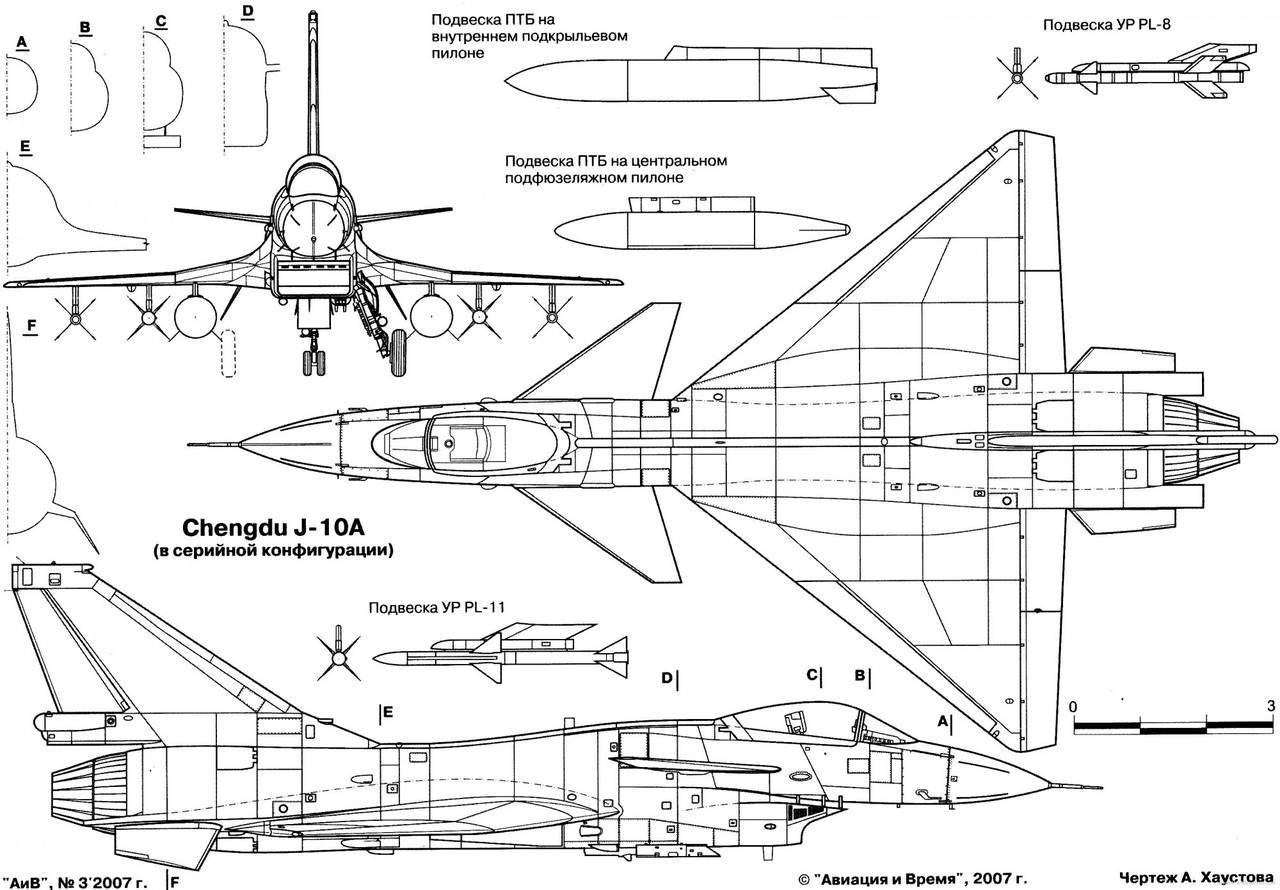
Structurally fuselage consists of three sections. Front bay is for: a pressurized cockpit pilot, radar, avionics bay, inlet, nose landing gear niche. In addition, it set canards. In the central part of the fuel tanks are located, the air passage of the engine and the main landing gear niche. Mounted on the tail vertical tail, beams with ventral fins and four brake flap. Inside is a compartment of the power plant. Chassis - tricycle, retractable into the fuselage. Front support (having two wheels) develops downstream, the main unicycle - against. On the pre-production aircraft and prototypes niche front support closing the pair of side flaps. At serial fighter Chengdu J-10A and J-10B in the design including the third leaf - front. Canopy for the aviation industry of China has an unprecedented glass area - pilot provided virtually all-round visibility.
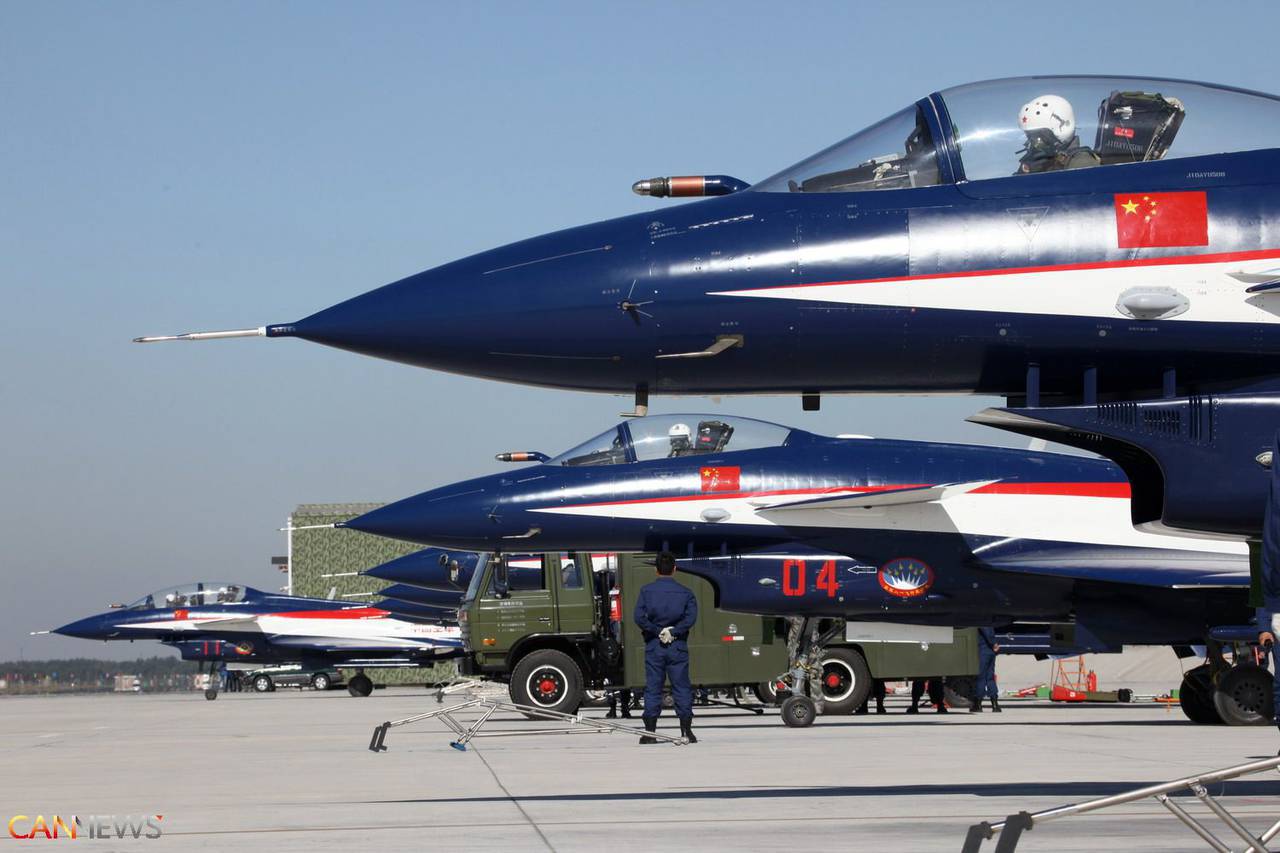
Aircraft design mainly made of aluminum alloys, composite materials used relatively little. Cab - sealed, ventilation type. Ejection seat provides salvation in all flight modes.
The root of the keel is placed with brake parachute container. To increase the directional stability at high angles of fighter attack (in this case the keel "obscured" the fuselage) of the wing on the tail boom are two ventral keel deflected outwards. In the area of the keel on each side of the fuselage has two brake flap. Two aerodynamic ridge located in the rear fuselage.
Above the wing behind the cockpit is located canards, which increases the lift coefficient at high angles of attack.
Wing - small elongation, triangular, with a straight trailing edge to increase government efficiency and mechanization. Two sections of the elevons on the rear edge of the wing. Wing leading edge vortex generating a "canine". It is equipped with a two-piece deflected elevons and toe.
As an aircraft propulsion was used one turbojet engine with afterburner AL-31FN Russian production. Engine weight is 1538 kg. Maximum thrust with afterburner - 12500 kg. Under the first contract for the supply of between China and the "Rosoboronexport", in 2002-2004, was delivered 54 motor data. After that concluded another contract for the purchase of 100 engines. Overall, China's needs are estimated at 250-300 units. Chinese military plans - replacement engines exported from Russia to similar domestic WS-10ATai Hang. Modification fighter Chengdu Super 10 different engine installation AL-31FN M1. Full afterburner power was increased up to 13,500 kgs.
Air intake - ventral, two-dimensional, adjustable. Cross section "throat" is altered by two movable panels. This arrangement provides the necessary degree of pressurization in different speed ranges of flight, however, increases the effective area of the dispersion, increasing the visibility of the radar when irradiated in the forward hemisphere. On the J-10B variant form of the air intake has been changed.
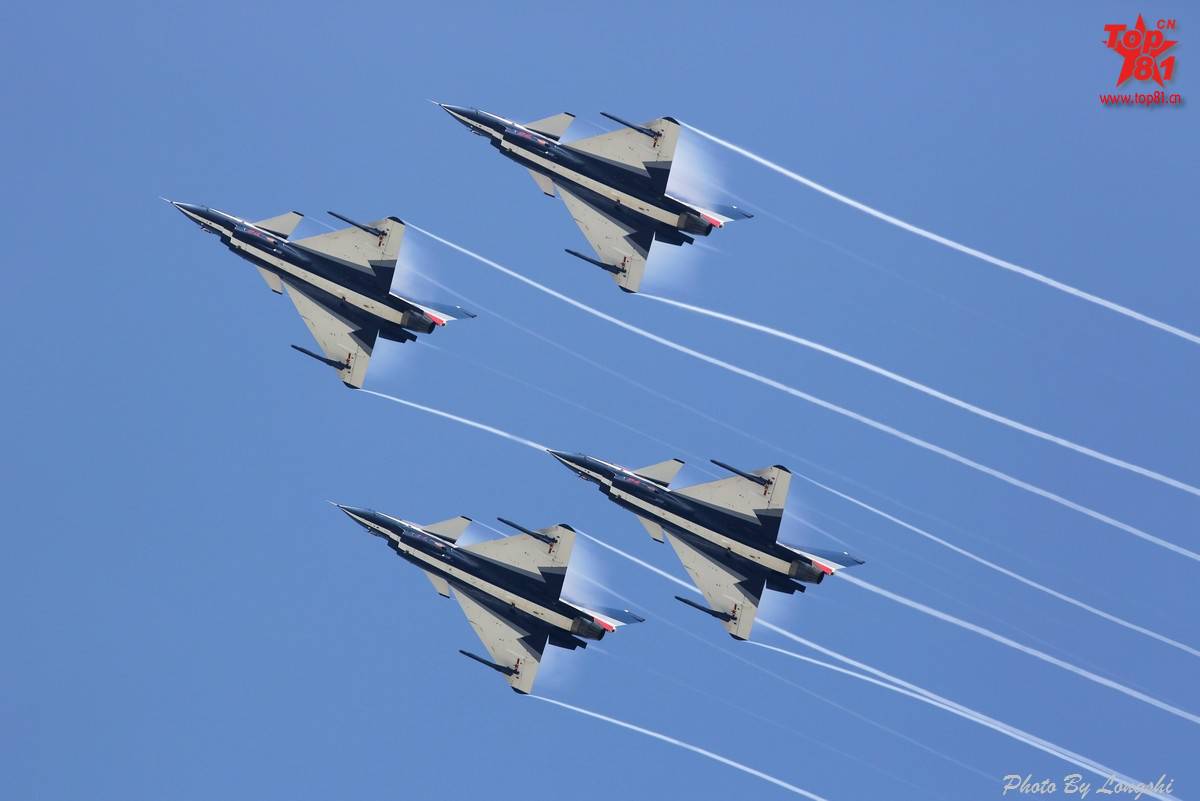
The fighter Chengdu J-10 internal fuel capacity of 4950 liters. Fuel tanks are located in the fuselage. Under the fuselage (the central node) and possible suspension under the wing of three additional fuel tanks. To increase the duration and range of the aircraft can be equipped with a system toplivopriemnikom refueling type "hose cone."
To ensure a high level of maneuverability fighter Chengdu J-10A was made statically unstable. This, in turn, required the use of by-wire system having a quadruple redundancy. This is the first combat aircraft of national development, which used similar technology. To create the system used the most modern computer technology. Architecture fighter cockpit, avionics and fire control system largely superior to those in other combat aircraft, developed in China. For example, information on the tactical situation and flight parameters displayed on the three multifunctional display, as well as projected onto the windshield.
In the cockpit controls are made on the basis of HTAS («handsopthrottle-and-stick») - everything you need to control the organs is under the hands of the pilot, which lie on the control lever and the engine thrust on the handle control plane. Thus, the pilot can fly a plane, never taking his eyes from the sight or the horizon. Computer control system provides automatic aircraft navigation and prevents the machine terminals are potentially dangerous regimes. In native package includes helmet-mounted sight.
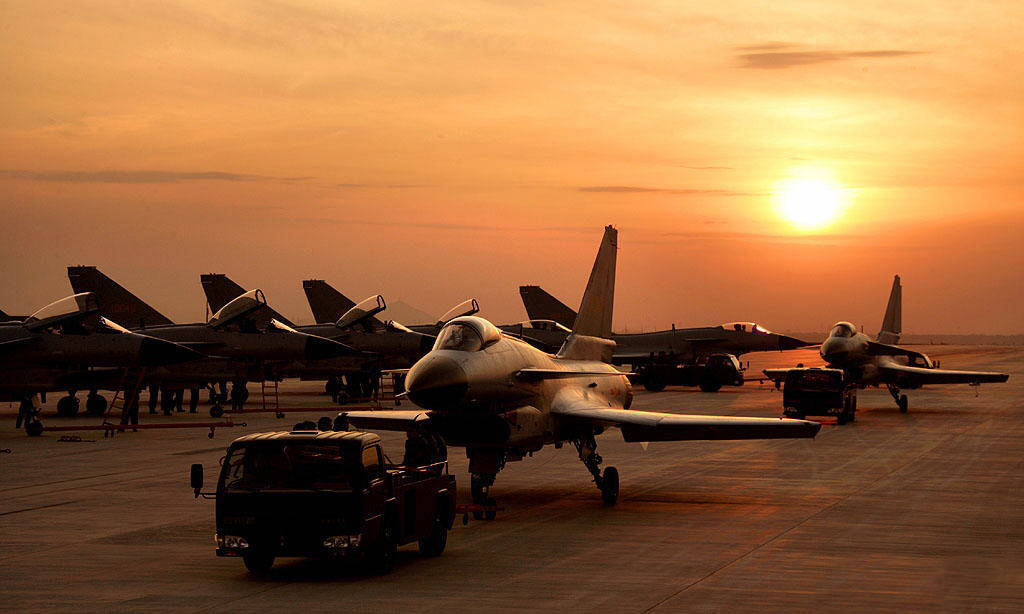
Fighter is equipped with digital computer flight parameters, navigation equipment GPS / INS system and notification of irradiation radars ARW9101. Russian Corporation "Fazotron-NIIP" developed by the Chinese order for Chengdu J-10A multifunction radar RP-35 "Pearl", equipped with a phased array antenna. According to the developers, this radar can simultaneously be accompanied by up to 24 air targets and able to work "on the ground". In China, at the same time completed development of its own radar JL-10A (some sources referred to as "Product of 1473"). Detection range of the "fighter" this radar is about 100 km, can simultaneously be accompanied by up to 10 targets with the firing of four of them. So far it is not clear which station is installed on production machines.
Export versions of the fighter may be equipped with radar and other, including: Russian N010 "Zhuk 10PD" Israeli IAI Elta EL/M-2023, Italian GalileoAvionicaGrifo 2000 (for political reasons to buy the latest China may be problematic).
Fighter Chengdu J-10A is equipped with built-in double-barreled 23-millimeter cannon, placed on a special carriage easily removable from the left side of the fuselage behind the nose landing gear compartment. According to some experts, this gun is a copy of a famous Soviet gun GS-2-23, which had previously been widely used on the MiG-21 and MiG-23.
External load on the nodes (seven points) can accommodate a total mass of arms 4500 kg. To destroy air targets fighter can be armed with guided missiles 2-4 PL-11 medium-range missiles with radar homing (Italian license guided missile Aspide Mk.1) or PL-12 (ShanDian-10 or SD-10) Chinese development. Melee used guided missiles PL-8 infrared homing (Israeli license Python 3) mounted on the outer wing pylons. The aircraft can be fitted Russian missiles R-73 and R-77, or American "Sparrow" and "Sidewinder." Ground targets can be destroyed using svobodnopadayuschih and corrected (with laser homing) bombs LT-2 and LS-6 or unguided rockets. Surface targets can be destroyed with the help of solid-fuel missiles YJ-8K and C-801K or antiship guided missile C-802 equipped with a turbojet engine. For ground attack fighter radar guided missile can be equipped with YJ-9. In addition, can be used missiles "air-surface", unguided rockets, bombs svobodnopadayuschie and other weapons.
The system includes a passive self-defense fighter VM/KG300G container with jamming equipment. Also J-10A can be fitted with container KZ900 (electronic intelligence equipment).
The first flight of the prototype took place on 23.03.1998 year. The public debut of the J-10 took place in November 2002, the car was presented at the Zhuhai Airshow. According to various estimates, the flight test program in China has mobilized six to ten prototypes.
Operation of Chinese fighter Chengdu J-10A was not without accidents. August 1, 2009 J-10, standing in the arsenal of the Chinese Air Force and piloted Maine Fanshenom crashed. The reason for the crash served a technical failure of the engine. The pilot managed to eject.
Modifications:
J-10A-multipurpose single-seat fighter. Export variant given the name F-10A.
J-10S - two-seat fighter. Designed to meet the challenges of training, electronic warfare, target and tracking, as well as to destroy ground targets.
J-10B - a modernized version of J-10A. Equipped with engine WS-10A, «subtle" recessed air intake, board radar with active phased array and optical-location station forward vision.
J-10C - deck version of the fighter.
Chinese multirole fighter J-10 was adopted by not only the Chinese army but also the Pakistan Army. As of 2012 armed air forces of China was 100 Chengdu J-10, in service with the Navy - 2 Chengdu J-10. Pakistan Army as of 2012 was armed with 36 J-10.
Performance specifications:
Modification - J-10.
Length - 14.57 m
Height - 4.78 m
Wingspan - 8.78 m
Wing area - 33,05 m. m
Empty weight - 9800 kg.
Normal takeoff weight - 18000 kg.
Internal fuel - 2625 l.
Fuel PTB - 4165 l.
Engine Type - AL-31FN turbofans.
Normal traction - 7600 kgs.
Afterburner thrust - 12,500 kgs.
Maximum speed - M = 2.
Cruising speed - 1110 km / h
Operational range - 2000 km.
Service ceiling - 18,000 m
Max. operating load - 9.
Crew - 1 person.
Armament:
- 23 mm cannon;
- Combat load - 7260 kg (7 knots external suspension);
- Ability to install missiles PL-8, PL-10, PL-11, P-27 and P-73, "air-to-air" missiles and "air-surface";
- Antiship raketyYJ-8K, unguided rockets, bombs and other svobodnopadayuschih
Adapted from
ru-aviation.livejournal.com
www.airwar.ru
www.militaryparitet.com
www.testpilot.ru
alternathistory.org.ua
=================
Mohon maaf, apabila repost, mohon di gembok saja.
Keberhasilan China di bidang Aviation dan sistim senjata tidak lepas dari peranan SDM Israel secara langsung, namun AS "murka" setelah banyak ilmu dapat di - absorbsi oleh SDM China.
Hal tsb, sebenarnya juga di alami di kita, dengan memperkenalkan giat retrofitting tank serta beberapa rengiat diantaranya untuk membuat prototype tank untuk perlindungan serangan udara dalam raid amphibi, jauh sebelum mereka melakukan "penetration pasifique" ke China, namun yang terjadi disini, konstelasi politik tidak mendukungnya.
Terima kasih,
Salam.
Chengdu J-10 - Chinese multi-purpose all-weather fighter. This fighter was designed and manufactured by the Chengdu Aircraft Industry Group (CAIG). Export version of the fighter has the designation F-10. In the west, the machine is also known as the Vigorous Dragon - «Swift dragon."

In China in the early 1990s. began to develop a new generation of fighter aircraft, which, on its combat potential had to walk to such aircraft as EF2000, «Rafale" or MiG-29M. Naturally, in the PRC to solve such a complex problem could not without cooperation with foreign companies owning the most advanced technology aircraft. In developing this machine originated probably the most unusual international symbiosis that combined Chinese, Israeli and Russian experts.
The basis for Chinese fighter aircraft designers took Israeli IAI «Lavi." In Israel, working on his plane stopped in 1987 under U.S. pressure.
In an open first print information about the new fighter appeared in October 1994. Then press with reference to the U.S. space reconnaissance, it was reported that Chengdu build aircraft that its size and outline resembles a fighter Dassault "Rafale" or "Eurofighter» EF2000.
Later it became clear that in shaping J-10 fighter involved specialists Israeli company IAI, who handed fighter technology to China "Lavi". The program involved a Chinese fighter jet and the Russian aviation industry. In particular, it was decided to equip the Russian aircraft turbofan engine AL-31F, which is installed on the Chinese Su-27. And reported on the negotiations, the acquisition of licenses for production of this engine in Chinese enterprises, but Russia does not show interest in the transfer to China of the latest technologies in the field of aircraft engine.
Aircraft development program declassified December 29, 2006 in the creation of J-10 took part in the Russian advisers from OKB MiG TsAGI. On the new Chinese fighter engines used scientific production association "Saturn" Russian and Chinese production (under license). In addition, the design of the aircraft were used by Israel sold to China for the development of the fighter IAI Lavi. In size J-10 occupies an intermediate position between the F-16 and Typhoon or Rafale, but it is much more Israeli Lavi. As of August 2012 it produced about 270 machines.

Fighter executed by the wind a "duck." Its aerodynamic design is optimized to fly at supersonic speeds and performing energetic maneuvers with access to large angles of attack.
Production aircraft J-10A first flew on June 28, 2002
J-10 fighter has aerodynamic design "duck" and mid-delta wing, swept, closely spaced to the wing canards odnokilevym and vertical tail surfaces. Basically airframe is made of aluminum alloy and carbon fiber. Assumes the use of limited measures to reduce the radar signature of the aircraft.
Integral part of the triangular low wing at the root is thicker profile, which decreases down the scale. Approximately 45 percent of semispan it fits with SUNGLASSES (detachable part of the wing), typed with a significant twist profiles and low relative thickness. Mechanization of the wing - flaps and deflected socks SUNGLASSES.

Structurally fuselage consists of three sections. Front bay is for: a pressurized cockpit pilot, radar, avionics bay, inlet, nose landing gear niche. In addition, it set canards. In the central part of the fuel tanks are located, the air passage of the engine and the main landing gear niche. Mounted on the tail vertical tail, beams with ventral fins and four brake flap. Inside is a compartment of the power plant. Chassis - tricycle, retractable into the fuselage. Front support (having two wheels) develops downstream, the main unicycle - against. On the pre-production aircraft and prototypes niche front support closing the pair of side flaps. At serial fighter Chengdu J-10A and J-10B in the design including the third leaf - front. Canopy for the aviation industry of China has an unprecedented glass area - pilot provided virtually all-round visibility.

Aircraft design mainly made of aluminum alloys, composite materials used relatively little. Cab - sealed, ventilation type. Ejection seat provides salvation in all flight modes.
The root of the keel is placed with brake parachute container. To increase the directional stability at high angles of fighter attack (in this case the keel "obscured" the fuselage) of the wing on the tail boom are two ventral keel deflected outwards. In the area of the keel on each side of the fuselage has two brake flap. Two aerodynamic ridge located in the rear fuselage.
Above the wing behind the cockpit is located canards, which increases the lift coefficient at high angles of attack.
Wing - small elongation, triangular, with a straight trailing edge to increase government efficiency and mechanization. Two sections of the elevons on the rear edge of the wing. Wing leading edge vortex generating a "canine". It is equipped with a two-piece deflected elevons and toe.
As an aircraft propulsion was used one turbojet engine with afterburner AL-31FN Russian production. Engine weight is 1538 kg. Maximum thrust with afterburner - 12500 kg. Under the first contract for the supply of between China and the "Rosoboronexport", in 2002-2004, was delivered 54 motor data. After that concluded another contract for the purchase of 100 engines. Overall, China's needs are estimated at 250-300 units. Chinese military plans - replacement engines exported from Russia to similar domestic WS-10ATai Hang. Modification fighter Chengdu Super 10 different engine installation AL-31FN M1. Full afterburner power was increased up to 13,500 kgs.
Air intake - ventral, two-dimensional, adjustable. Cross section "throat" is altered by two movable panels. This arrangement provides the necessary degree of pressurization in different speed ranges of flight, however, increases the effective area of the dispersion, increasing the visibility of the radar when irradiated in the forward hemisphere. On the J-10B variant form of the air intake has been changed.

The fighter Chengdu J-10 internal fuel capacity of 4950 liters. Fuel tanks are located in the fuselage. Under the fuselage (the central node) and possible suspension under the wing of three additional fuel tanks. To increase the duration and range of the aircraft can be equipped with a system toplivopriemnikom refueling type "hose cone."
To ensure a high level of maneuverability fighter Chengdu J-10A was made statically unstable. This, in turn, required the use of by-wire system having a quadruple redundancy. This is the first combat aircraft of national development, which used similar technology. To create the system used the most modern computer technology. Architecture fighter cockpit, avionics and fire control system largely superior to those in other combat aircraft, developed in China. For example, information on the tactical situation and flight parameters displayed on the three multifunctional display, as well as projected onto the windshield.
In the cockpit controls are made on the basis of HTAS («handsopthrottle-and-stick») - everything you need to control the organs is under the hands of the pilot, which lie on the control lever and the engine thrust on the handle control plane. Thus, the pilot can fly a plane, never taking his eyes from the sight or the horizon. Computer control system provides automatic aircraft navigation and prevents the machine terminals are potentially dangerous regimes. In native package includes helmet-mounted sight.

Fighter is equipped with digital computer flight parameters, navigation equipment GPS / INS system and notification of irradiation radars ARW9101. Russian Corporation "Fazotron-NIIP" developed by the Chinese order for Chengdu J-10A multifunction radar RP-35 "Pearl", equipped with a phased array antenna. According to the developers, this radar can simultaneously be accompanied by up to 24 air targets and able to work "on the ground". In China, at the same time completed development of its own radar JL-10A (some sources referred to as "Product of 1473"). Detection range of the "fighter" this radar is about 100 km, can simultaneously be accompanied by up to 10 targets with the firing of four of them. So far it is not clear which station is installed on production machines.
Export versions of the fighter may be equipped with radar and other, including: Russian N010 "Zhuk 10PD" Israeli IAI Elta EL/M-2023, Italian GalileoAvionicaGrifo 2000 (for political reasons to buy the latest China may be problematic).
Fighter Chengdu J-10A is equipped with built-in double-barreled 23-millimeter cannon, placed on a special carriage easily removable from the left side of the fuselage behind the nose landing gear compartment. According to some experts, this gun is a copy of a famous Soviet gun GS-2-23, which had previously been widely used on the MiG-21 and MiG-23.
External load on the nodes (seven points) can accommodate a total mass of arms 4500 kg. To destroy air targets fighter can be armed with guided missiles 2-4 PL-11 medium-range missiles with radar homing (Italian license guided missile Aspide Mk.1) or PL-12 (ShanDian-10 or SD-10) Chinese development. Melee used guided missiles PL-8 infrared homing (Israeli license Python 3) mounted on the outer wing pylons. The aircraft can be fitted Russian missiles R-73 and R-77, or American "Sparrow" and "Sidewinder." Ground targets can be destroyed using svobodnopadayuschih and corrected (with laser homing) bombs LT-2 and LS-6 or unguided rockets. Surface targets can be destroyed with the help of solid-fuel missiles YJ-8K and C-801K or antiship guided missile C-802 equipped with a turbojet engine. For ground attack fighter radar guided missile can be equipped with YJ-9. In addition, can be used missiles "air-surface", unguided rockets, bombs svobodnopadayuschie and other weapons.
The system includes a passive self-defense fighter VM/KG300G container with jamming equipment. Also J-10A can be fitted with container KZ900 (electronic intelligence equipment).
The first flight of the prototype took place on 23.03.1998 year. The public debut of the J-10 took place in November 2002, the car was presented at the Zhuhai Airshow. According to various estimates, the flight test program in China has mobilized six to ten prototypes.
Operation of Chinese fighter Chengdu J-10A was not without accidents. August 1, 2009 J-10, standing in the arsenal of the Chinese Air Force and piloted Maine Fanshenom crashed. The reason for the crash served a technical failure of the engine. The pilot managed to eject.
Modifications:
J-10A-multipurpose single-seat fighter. Export variant given the name F-10A.
J-10S - two-seat fighter. Designed to meet the challenges of training, electronic warfare, target and tracking, as well as to destroy ground targets.
J-10B - a modernized version of J-10A. Equipped with engine WS-10A, «subtle" recessed air intake, board radar with active phased array and optical-location station forward vision.
J-10C - deck version of the fighter.
Chinese multirole fighter J-10 was adopted by not only the Chinese army but also the Pakistan Army. As of 2012 armed air forces of China was 100 Chengdu J-10, in service with the Navy - 2 Chengdu J-10. Pakistan Army as of 2012 was armed with 36 J-10.
Performance specifications:
Modification - J-10.
Length - 14.57 m
Height - 4.78 m
Wingspan - 8.78 m
Wing area - 33,05 m. m
Empty weight - 9800 kg.
Normal takeoff weight - 18000 kg.
Internal fuel - 2625 l.
Fuel PTB - 4165 l.
Engine Type - AL-31FN turbofans.
Normal traction - 7600 kgs.
Afterburner thrust - 12,500 kgs.
Maximum speed - M = 2.
Cruising speed - 1110 km / h
Operational range - 2000 km.
Service ceiling - 18,000 m
Max. operating load - 9.
Crew - 1 person.
Armament:
- 23 mm cannon;
- Combat load - 7260 kg (7 knots external suspension);
- Ability to install missiles PL-8, PL-10, PL-11, P-27 and P-73, "air-to-air" missiles and "air-surface";
- Antiship raketyYJ-8K, unguided rockets, bombs and other svobodnopadayuschih
Adapted from
ru-aviation.livejournal.com
www.airwar.ru
www.militaryparitet.com
www.testpilot.ru
alternathistory.org.ua
=================
Mohon maaf, apabila repost, mohon di gembok saja.
Keberhasilan China di bidang Aviation dan sistim senjata tidak lepas dari peranan SDM Israel secara langsung, namun AS "murka" setelah banyak ilmu dapat di - absorbsi oleh SDM China.
Hal tsb, sebenarnya juga di alami di kita, dengan memperkenalkan giat retrofitting tank serta beberapa rengiat diantaranya untuk membuat prototype tank untuk perlindungan serangan udara dalam raid amphibi, jauh sebelum mereka melakukan "penetration pasifique" ke China, namun yang terjadi disini, konstelasi politik tidak mendukungnya.
Terima kasih,
Salam.
Diubah oleh boleroes11 05-04-2014 08:28
0
15.1K
34
Thread Digembok
Urutan
Terbaru
Terlama
Thread Digembok
Komunitas Pilihan